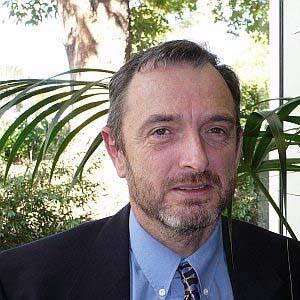

Published on the 3rd September 2012 by ANSTO Staff
ANSTO's Dr Philip Bendeich recently spoke to the engineering industry magazine PACE about the science of welds and how his work can benefit Australian industry.
 |
| Dr Philip Bendeich |
Dr Bendeich (pictured right) is a research scientist in the Structural Integrity Group at ANSTO's Institute of Materials Engineering. He has spent over five years developing the capability to accurately analyse residual stresses and predict residual stresses in welds.
How does your research relate to industry?
The science of predicting the residual stresses of welds may be used in many industries such as power, shipbuilding or petrochemicals. We tend to concentrate on the power industry and have traditionally done an awful lot of work with Australian power stations - in particular it's high temperature componentry.
If you looked at say something like the aluminium industry, they might have an issue with stress corrosion cracking. So there are a number of industries that probably could benefit from our work. I think in Australia, it's probably a bit too advanced for a lot of industries to invest in, as it's very expensive to do that type of analysis. But if you're looking at the design of future power stations, this development is going to help.
We're combining the weld residual stresses more with the damage and fracture mechanics. This includes high temperature creep crack growth which is a bit different to regular fracture mechanics.
What software tools do you use?
We use SIMULIA Abaqus software from Dassault Systèmes as our primary tool as its flexibility is a major advantage. This is provided to us by simulation solution provider Simuserv. It enables us to do weld analysis, for example.
There are other dedicated packages out there but they're black boxes - you can't look into them. SIMULIA Abaqus allows you to write new routines, implement your own ideas and have a fairly open picture of what's actually going on in your analysis.
It's also the package most researchers in this field use because of its adaptability. If we were to go with a different package, it would be much harder for us to talk to most of our collaborators overseas.
You mentioned designing future power stations. What's the degree of accuracy your analysis can provide?
It's very good. I cannot quantify it but you can get a fairly good idea of the stresses that you're going to get in there. You can use it in combination with things like high temperature remaining life studies and creep rupture studies.
If you go down the detailed FEA (Finite Element Analysis) path, you'll find that's quite an advanced analysis. Quite often you're drawing on a lot of methodologies that are codified. If you step outside the code, you've got to justify yourself. There's a lot of conservatism built into the codes.
So you build a model and you work out the residual stress across a weld. You can then adjust your fracture mechanics analysis, your crack growth analysis. You can get a lot more life out of the component. I'm not suggesting you do it in a nuclear plant, but certainly in a coal-fired plant.
You can monitor a crack, and you can keep it running for a little bit longer. As long as you've got the confidence from your analysis to show that it's not going to fail rapidly. If a crack is found, you might say, 'no, I will let that one keep going'.
Australia's power stations are ageing - many have reached the end of their design life. A lot of them were designed before computers were readily available, so there is a certain amount of conservatism built in and some extended life may be drawn out of them. The cost of replacing a power station is not cheap, and nobody wants to do it right now.
How does your work help get more life out of our infrastructure assets?
We do a lot of work with the Welding Technology Institute of Australia which has a very strong Power Gen group. As far as putting weld stresses in, they're also a very conservative industry. The nuclear industry overseas is the most interested in weld stress analysis because they need to take that to their regulators and are prepared to spend the extra effort on it.
However all this work we're doing can go into any station - they can be designed more optimally. The higher temperature you run them, the more efficient they are, so you're cutting your CO2. If you don't want to replace components all the time, you might optimise a welding procedure to give you a different residual stress profile.
You might change the design of a component if you think you're going to get a longer life out of it. The Isight package is a good tool as it has the potential to let you optimise the design of components in any type of power generator plant.
How has the private sector accepted your work?
They think it's very expensive to get a stress analysis done in Australia. A number of industries could have saved millions of dollars if we had been able to conduct a stress analysis for them, however they felt $50,000 for an analysis was too expensive. They have chosen instead to spend the same amount of money replacing a component every year, and risk whatever's going to happen if it cracks up.
It's difficult to get the Australian private sector to see the value in this work - they're very conservative, as well. A lot of them believe this is just a model and it can't possibly be right. So it's a hard road to take, to try and convince people you can do it properly. But you can't do it quickly, and you can't do it cheaply.
Also, modelling is something you have to verify. You can do good models and you can do bad models, and you've got to know whether they're good or not. You also have to know why they're good.